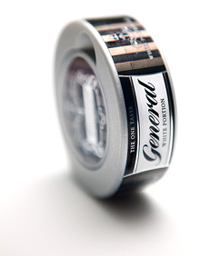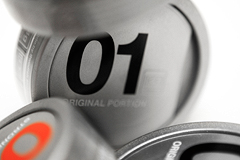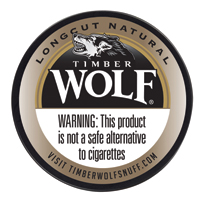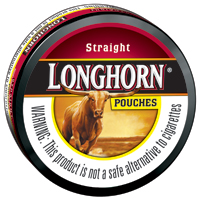Source: The Swedish Match
Author: Staff
 The Scandinavian snus market is comprised of a broad range of brands and product varieties, with pouch products being the most popular and continuing to grow in importance. The largest market in Scandinavia is Sweden, the largest snus market in the world measured in per capita consumption. Norway was the fastest growing market but Travel Retail and the Swedish market also experienced volume growth in 2009.
The Scandinavian snus market is comprised of a broad range of brands and product varieties, with pouch products being the most popular and continuing to grow in importance. The largest market in Scandinavia is Sweden, the largest snus market in the world measured in per capita consumption. Norway was the fastest growing market but Travel Retail and the Swedish market also experienced volume growth in 2009.
Snus, traditionally a Swedish product, is increasingly being recognized globally as an exciting new market category. This is evidenced by the big tobacco players testing Swedish style snus in chosen markets. During 2009, one of Swedish Match competitors rolled-out snus nationally in the US. Still a very small category in the US, Swedish style snus is considered to have a long term growth potential. Swedish Match is continuing its efforts to assess and develop the market for Swedish style snus in the US market through the marketing of brands such as General.
Moreover, through the 2009 joint venture with Philip Morris International, Swedish Match will pursue growth opportunities outside Scandinavia and the US. While still undeveloped, these marketsprovide future growth opportunities.
Within the European Union, sales of snus have been banned since 1992. Sweden was exempted from the sales ban for the Swedish market when it became an EU member in 1995.
The traditional US moist snuff market has achieved sustained volume growth over the past decade. The US snuff market is comprised primarily of loose varieties in a relatively small number of cuts and flavors. However, the pouch snuff segment has been rapidly growing as consumer view pouches as convenient and easy to use. The market is composed of a premium segment and valuepriced segments which are equivalent in size in volume terms. The value priced segments have grown significantly over the past decade, while the premium segment has experienced modest declines in volume. Many of the new consumers entering the snus and snuff categories are former cigarette smokers.
Snus Scandinavia
Main brands
The largest brands on the Scandinavian market are General, Ettan, Grovsnus, Göteborgs Rapé, Catch and Kronan. The General brand is the best selling snus brand in both Sweden and Norway.
 During 2009, the Group launched a number of new products, primarily as line extensions or product improvements of existing brands, (the most notable being for General) or under new brands. In October, the Group launched The Lab Series 01 and 02 based on a new formula recipe, a new pouch format, a unique design, and modern graphics. Developed after extensive consumer research, these new products are now available in Norway and parts of Sweden.
During 2009, the Group launched a number of new products, primarily as line extensions or product improvements of existing brands, (the most notable being for General) or under new brands. In October, the Group launched The Lab Series 01 and 02 based on a new formula recipe, a new pouch format, a unique design, and modern graphics. Developed after extensive consumer research, these new products are now available in Norway and parts of Sweden.
In Scandinavia, growth of the share of white-portion snus continued, and Swedish Match during the year upgraded its General White Portion product, now with the upscale star formation packaging technique in both Sweden and Norway. Kronan, the Group’s value priced brand in this region, is the number one brand in that segment in Sweden. In addition to its traditional snus products, Swedish Match also offers the number one brand in the non-tobacco smokefree segment, Onico, providing consumers a high quality nicotine free alternative. On the Norwegian market, the Group has continued to grow with such strong traditional brands as General, Göteborgs Rapé, Catch, and Röda Lacket.
Market development
In 2009, consumption in the Scandinavian snus market is estimated by Swedish Match to have amounted to 250 million cans and to have grown 5 percent from 2008 levels. It is estimated that approximately 25 percent1) of men in Sweden use snus on a regular basis, while in Norway the percentage of men using the product is lower, but growing. The number of men using snus has beenrelatively stable in Sweden and growing in Norway, while the number of women using snus on a regular basis is increasing. Swedish Match is the leading manufacturer of snus, with a volume share in Sweden of approximately 86 percent in October – November 2009.2) In Norway, Swedish Match has a volume share of 74 percent.2) The Swedish market is by far the largest market in Scandinavia, with approximately one million consumers of which approximately 20 percent are women. The Swedish market is estimated to have grown by 5 percent in 2009, following two years of market declines. The Norwegian market has grown by double digits in recent years, and in 2009 is estimated to have grown by more than 10 percent. The Travel Retail market, which is comprised primarily of duty paid and duty free shops at airports and on ferries, is estimated to have grown modestly in 2009, after several years of very rapid growth.
Over the past several years, consumers have moved from traditional loose product to pouch snus, which now accounts for about two thirds of volumes in Scandinavia.2)
Tobacco excise taxes in Sweden, based on weight, are a significant proportion of the retail price of a can of snus. During 2009 there were no excise tax increases in Sweden, which meant that no significant hoarding or destocking occurred during the year. During 2008, the weight based tax on snus increased by 90 SEK per kilo, following an increase in 2007 of 123 SEK per kilo, double the level in 2006. In Norway the excise tax increased by 13 percent during 2009.
Point of sales and merchandising
The most important sales channels for snus in Scandinavia are supermarkets, convenience stores, and gasoline stations. Snus is also sold in tobacconists, bars, restaurants, and in Travel Retail outlets which include airports and ferries. The sales price is set by the retailers, with the result that prices can vary widely. Snus is merchandised from coolers to help ensure freshness and quality. During 2009, Swedish Match continued its efforts with its consumer website for the Swedish market. By logging on to:www.swedishmatch.com/konsument, Swedish consumers can easily explore the Swedish Match product range.
Competitors
The largest competitor in Scandinavia is British American Tobacco (BAT), which acquired the snus business of Scandinavian Tobacco Group (STG) including Fiedler & Lundgren (F&L) in 2008. In October– November 2009, BAT (F&L) had a market volume share of approximately 10 percent in Sweden.2) Other competitors on the Scandinavian market include Japan Tobacco Inc. and Imperial Tobacco Group. Imperial Tobacco Group is the largest competitor in Norway, with a market share of approximately 21 percent.2) In Sweden, most competitive brands are positioned in the lowpriced segment, while in Norway most competitive brands are premium priced.
Moist snuff US
Main brands
The largest brands of moist snuff for Swedish Match on the US market are Timber Wolf, Longhorn, and Red Man, launched in 2007 and rolled out nationally in 2008. The Red Man brand for moist snuff draws on the heritage and values of Red Man chewing tobacco, the best selling brand of chewing tobacco in the US.2) The Timber Wolf brand is available in a wide variety of cuts and flavors, and includes Timber Wolf Packs, part of the rapidly growing pouch segment in the US. In 2009, pouches were added to the Longhorn portfolio, making them the first pouches available in the everyday low price segment.
Market development

The US is the world’s largest moist snuff market, with consumption in 2009 estimated by Swedish Match to be approximately 1.2 billion cans. During the past five years, can volume in the moist snuff market has grown at the rate of approximately 6 percent annually, slowing to a market growth rate of 1.6 percent in volume terms in 2009.2) This growth comes primarily from new consumers, including cigarette smokers, who recognize the advantages of this smokefree product in a country where smoking restrictions continue to intensify. Moist snuff is sold throughout the US, and volumes are particularly strong in the Southeast, Southwest, and mid-Atlantic states.
The fastest growth in the US moist snuff market is in the value priced and pouch segments. In 2009, the value priced segments accounted for nearly 50 percent of total category volume. The Swedish Match portfolio is almost exclusively in the value priced segments, with both traditional loose and pouch products. The pouch category grew by approximately 20 percent in 2009, continuing its rapid growth of recent years. The pouch category now accounts for close to 10 percent of the cans of moist snuff sold in the US.2)
During the first half of 2009, competitors significantly reduced list prices on their premium products, while modifying their use of promotional support for these products. List prices for value priced products increased during the middle of the year, largely offsetting an increase in the federal excise tax on moist snuff. List prices for premium products did not change following the excise tax increase. As a result, the gap in the list price between premium and low priced products narrowed considerably between the beginning of the year and the middle of the year. In addition, tax adjustments in some states altered the relative pricing landscape in those states. Despite the turbulence of relative pricing, the value priced segments continued to significantly outperform the market as a whole, up by approximately 7 percent.
 In June, the Food and Drug Administration was given regulatory authority over the US tobacco industry. Regulations will cover products, in terms of labeling, advertising, and product sampling, and will generally be in full effect from mid-year 2010.
In June, the Food and Drug Administration was given regulatory authority over the US tobacco industry. Regulations will cover products, in terms of labeling, advertising, and product sampling, and will generally be in full effect from mid-year 2010.
Snuff is a dynamic category, with new products, new brands, and line extensions constantly offering consumers a wide variety of choices. For the full year 2009, Swedish Match market share by volume was 12.9 percent, up from 12.4 percent in 2008.2) Red Man averaged 1.7 percent of the market in 2009, up from 1.3 percent in 2008. The Longhorn brand also experienced significant share gains, with volume share averaging 5.1 percent in 2009, up from 4.6 percent in 2008.2)
Point of sales and merchandising
The main distribution channels are convenience stores and gas stations, discount tobacco outlets, supermarkets, as well as the Internet. The product is merchandised through point of sale displays, and supported by both in-store and adult lifestyle related activities.
Competitors
The largest competitors on the market are Altria (UST), with a market share by volume of 55 percent for 2009, and Reynolds American (Conwood), with a market share of 31 percent.2)
Snus US
Market development
Swedish Match, as well as other competitors, continued efforts to assess and develop a market for pasteurized snus in the US market. Still a very small category in the US, Swedish style snus is considered to have a long term growth potential. Consumption in 2009 estimated by Swedish Match to be more than 15 million cans, more than four times larger than 2008. The category has received extensive media attention during the year, as one of the largest moist snuff competitors began rolling out their snus product nationwide.
The main Swedish Match brand for snus in the US is General, available in selected tobacconists. During the year, following successful trials, the General brand was expanded into more outlets and was available in more than 600 stores at year end.
Point of sales and merchandising
The Swedish Match main snus distribution channels are high end and specialty cigar and tobacco stores, as well as the Internet – places where consumers are able to spend more time to learn about snus and the Swedish snus experience. Snus may also be sold in selected convenience stores and gas stations, discount tobacco outlets, and supermarkets. The product is merchandised through point of sale displays in coolers. By logging on to www.generalsnus.com, consumers can find information about Swedish Match products.
Competitors
The largest competitors on the market are Reynolds American and Altria.
Snus outside of Scandinavia and the US
With the establishment of a joint venture company with Philip Morris International, Swedish Match now has more opportunities to produce snus for markets outside of Scandinavia and the US. The joint venturecompany, 50 percent owned by Swedish Match, will source its products from Swedish Match, and sell them through the PMI sales and distribution network. The joint venture company will thereby have both state of the art products and outstanding distribution capabilities.
During 2009 the joint venture company entered into the research phase, and field research is expected to take place in some test markets during 2010. In September Swedish Match ceased to manufacture dry nasal snuff with the sale of its South African pipe tobacco and accessories business to PMI.
Production and distribution
In Sweden, production of snus takes place in Gothenburg and Kungälv. The Kungälv facility opened in 2003, and is currently being expanded. This state of the art unit specializes in pouch products including the Swedish Match proprietary white-portion technology.
In the US, production of moist snuff takes place in Owensboro, Kentucky. The Owensboro factory, in addition to moist snuff, produces chewing tobacco and pipe tobacco. Swedish Match has developed a flexible production platform at the plant which allows resources to be employed where needed. This flexible setup means that the Group can efficiently adapt to production changes as increases in snuff production offset declines in chewing and pipe tobacco. Prior to September 2009, Swedish Match produced nasal snuff in Boksburg, South Africa.
Distribution for all tobacco products in Sweden, including products from other manufacturers, is shipped from the Group’s distribution facilities in Stockholm and Gothenburg. A significant portion of purchase orders are processed through its webshop and supplementary electronic purchase systems. Products are most often delivered on a weekly basis to avoid retail out of stock situations.
In the US, Swedish Match ships products daily to wholesaler and selected retailer locations throughout the country direct from its production facilities and through both owned and third-party warehouses.

Leave A Comment
You must be logged in to post a comment.